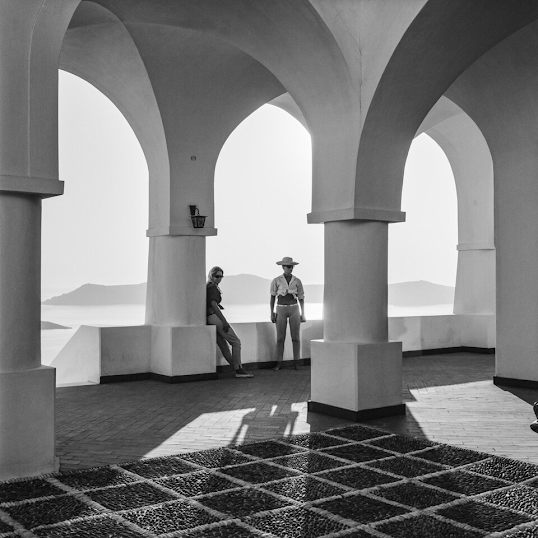https://www.telegraph.co.uk/travel/destinations/europe/greece/beautiful-islands-greece-instagram-crowd-ruined/
Few places have become synonymous with the scourge of ‘overtourism’ quite like Santorini and Mykonos. Millions of sunseekers crowd onto the shores of these tiny Greek islands each year for an orgy of pouting and posing in the pursuit of social media ‘likes’ and fleeting public validation. But it wasn’t always thus, as these photographs by veteran US photographer and Greece aficionado Robert McCabe reveal.
“The garbage collection service was one man with two baskets and a donkey,” added the photographer, who divides his time between America and Greece and has spent the best part of 70 years exploring every corner of the Mediterranean country.
McCabe’s Greek photographs have been published in numerous collections, but none are more poignant than Santorini: Portrait of a Vanished Era and Mykonos: Portrait of a Vanished Era, from which these were taken.
McCabe said: “For that first trip in 1954 we travelled by boat all the way from New York, sleeping in bunk beds in the belly of the ship – around 12 to a dorm. During the crossing I remember jumping out of bed one morning to find myself ankle deep in water. For a minute I thought the ship was sinking, but then I discovered the source of the leak: an overflowing toilet!
“We were supposed to be in Greece for two weeks, and had plans to go on to Egypt, and then back via Italy and France. But we were so taken by the country we cancelled the rest of our itinerary.”
There were no hotels back then – people would just rent you a room,” said McCabe. “The locals were very curious to meet us – many people hadn’t even seen a camera before and loved to be photographed. Some simply couldn’t understand why we had gone there, or how we’d found the money to do it.”
“The hospitality was extraordinary. I recall one experience in the Sixties, when we stayed for a week or more on one island, eating all our meals in the same family restaurant. Each night we would try to pay the bill, and the owner would wave us away. On our last day, we told him we were leaving and tried to pay the tab, but he still wouldn’t accept any money. ‘A souvenir!’ he told us. Needless to say I snuck into the kitchen and left some cash when he wasn’t looking.”
Trying to explain the Greek tradition of warm hospitality, McCabe said: “It’s a very family-oriented society, which is definitely something we’ve lost in the UK and the US. They are devoted to their children, and their traditions – in Patmos, where I now spend much of my time, it’s like there’s a religious celebration for every day of the year.”
Getting between the islands was sometimes a dicey experience. “In the Fifties I took a boat from Rhodes to Crete, and we got stuck in this terrible storm,” recalled McCabe. “These ships were all hand-me-downs and I learnt that our vessel sank a short time after in the Dodecanese. In fact, that was the ship’s second sinking. A maritime expert later told me that it has been sunk by the Nazis, raised by entrepreneurs who put it into service as a passenger ship, before its eventual demise.”
“On the islands, most people got around by donkey – although Santorini did have two working motor vehicles: a bus and a World War Two jeep. In 1954 we were given access to the jeep and used it to visit the mountaintop ruins of Ancient Thera, on the winding road that had recently been built to accommodate the visit of Konrad Adenauer, whose grandfather excavated the site.”
“I naively thought this way of life would go on forever, that I could come back every summer and have the same experience. But in the late Sixties and early Seventies, things changed dramatically.”
“After that first visit to Santorini we got hold of a British Admiralty chart and, for a joke, developed the island, adding an airport and a couple of marinas... but what happened in real life was 50 times worse.”
Furthermore, he says that unspoiled corners of Greece do still exist, pinpointing Agathonisi, Kasos and Leipsoi in the Dodecanese, as well as Fourni (not pictured): “It has this incredible ancient marble quarry right on the coast, and their unfinished pieces from 2,000 years ago – capitals, columns – are still waiting to be picked up. I’ve not been back for a while, but it’s certainly a place to glimpse the Greece that existed before mass tourism.”

















No comments:
Post a Comment